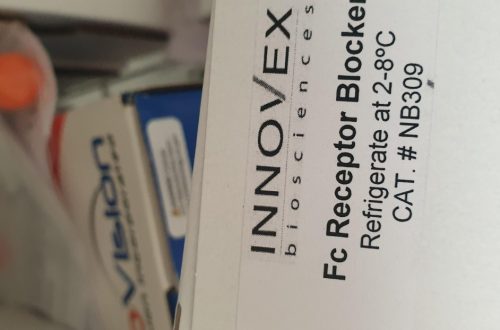
On the design, functions, and biomedical applications of high-throughput dielectrophoretic micro-/nanoplatforms: a review
As an efficient, rapid and label-free micro-/nanoparticle separation technique, dielectrophoresis (DEP) has attracted widespread attention in recent years, especially in the field of biomedicine, which exhibits huge potential in biomedically relevant applications such as disease diagnosis, cancer cell screening, biosensing, and others. DEP technology has been greatly developed recently from the low-flux laboratory level to high-throughput practical applications. In this review, we summarize the recent progress of DEP technology in biomedical applications, including firstly the design of various types and materials of DEP electrode and flow channel, design of input signals, and other improved designs.
Then, functional tailoring of DEP systems with endowed specific functions including separation, purification, capture, enrichment and connection of biosamples, as well as the integration of multifunctions, are demonstrated. After that, representative DEP biomedical application examples in aspects of disease detection, drug synthesis and screening, biosensing and cell positioning are presented. Finally, limitations of existing DEP platforms on biomedical application are discussed, in which emphasis is given to the impact of other electrodynamic effects such as electrophoresis (EP), electroosmosis (EO) and electrothermal (ET) effects on DEP efficiency. This article aims to provide new ideas for the design of novel DEP micro-/nanoplatforms with desirable high throughput toward application in the biomedical community.
2D phosphorene nanosheets, quantum dots, nanoribbons: synthesis and biomedical applications
Phosphorene, also known as black phosphorus (BP), is a two-dimensional (2D) material that has gained significant attention in several areas of current research. Its unique properties such as outstanding surface activity, an adjustable bandgap width, favorable on/off current ratios, infrared-light responsiveness, good biocompatibility, and fast biodegradation differentiate this material from other two-dimensional materials. The application of BP in the biomedical field has been rapidly emerging over the past few years. This article aimed to provide a comprehensive review of the recent progress on the unique properties and extensive medical applications for BP in bone, nerve, skin, kidney, cancer, and biosensing related treatment. The details of applications of BP in these fields were summarized and discussed.
Trends in Micro-/Nanorobotics: Materials Development, Actuation, Localization, and System Integration for Biomedical Applications
Micro-/nanorobots (m-bots) have attracted significant interest due to their suitability for applications in biomedical engineering and environmental remediation. Particularly, their applications in in vivo diagnosis and intervention have been the focus of extensive research in recent years with various clinical imaging techniques being applied for localization and tracking.
The successful integration of well-designed m-bots with surface functionalization, remote actuation systems, and imaging techniques becomes the crucial step toward biomedical applications, especially for the in vivo uses. This review thus addresses four different aspects of biomedical m-bots: design/fabrication, functionalization, actuation, and localization. The biomedical applications of the m-bots in diagnosis, sensing, microsurgery, targeted drug/cell delivery, thrombus ablation, and wound healing are reviewed from these viewpoints. The developed biomedical m-bot systems are comprehensively compared and evaluated based on their characteristics. The current challenges and the directions of future research in this field are summarized.
Construction of Poly(amidoamine) Dendrimer/Carbon Dot Nanohybrids for Biomedical Applications
Design of intelligent hybrid nanoparticles that can integrate diagnosis and therapy components plays an important role in the field of nanomedicine. Poly(amidoamine) (PAMAM) dendrimers possessing a unique architecture and tunable functional groups have been widely developed for various biomedical applications. Carbon dots (CDs) are considered as a promising fluorescence probe or drug delivery system due to their stable fluorescence property and excellent biocompatibility. The distinctive merits of PAMAM dendrimers and CDs are amenable for them to be constructed as perfect nanohybrids for different biomedical applications, in particular for cancer nanomedicine. Here, the recent advances in the construction of PAMAM dendrimer/CD nanohybrids for diverse biomedical applications, in particular for sensing and cancer theranostics are summarized. Finally, the future perspectives of the PAMAM dendrimer/CD nanohybrids are also briefly discussed.

Antibacterial metals and alloys for potential biomedical implants
Metals and alloys, including stainless steel, titanium and its alloys, cobalt alloys, and other metals and alloys have been widely used clinically as implant materials, but implant-related infection or inflammation is still one of the main causes of implantation failure. The bacterial infection or inflammation that seriously threatens human health has already become a worldwide complaint.
Antibacterial metals and alloys recently have attracted wide attention for their long-term stable antibacterial ability, good mechanical properties and good biocompatibility in vitro and in vivo. In this review, common antibacterial alloying elements, antibacterial standards and testing methods were introduced. Recent developments in the design and manufacturing of antibacterial metal alloys containing various antibacterial agents were described in detail, including antibacterial stainless steel, antibacterial titanium alloy, antibacterial zinc and alloy, antibacterial magnesium and alloy, antibacterial cobalt alloy, and other antibacterial metals and alloys.
Researches on the antibacterial properties, mechanical properties, corrosion resistance and biocompatibility of antibacterial metals and alloys have been summarized in detail for the first time. It is hoped that this review could help researchers understand the development of antibacterial alloys in a timely manner, thereby could promote the development of antibacterial metal alloys and the clinical application.
Influence of biomedical education on health and eating habits of university students in Spain


